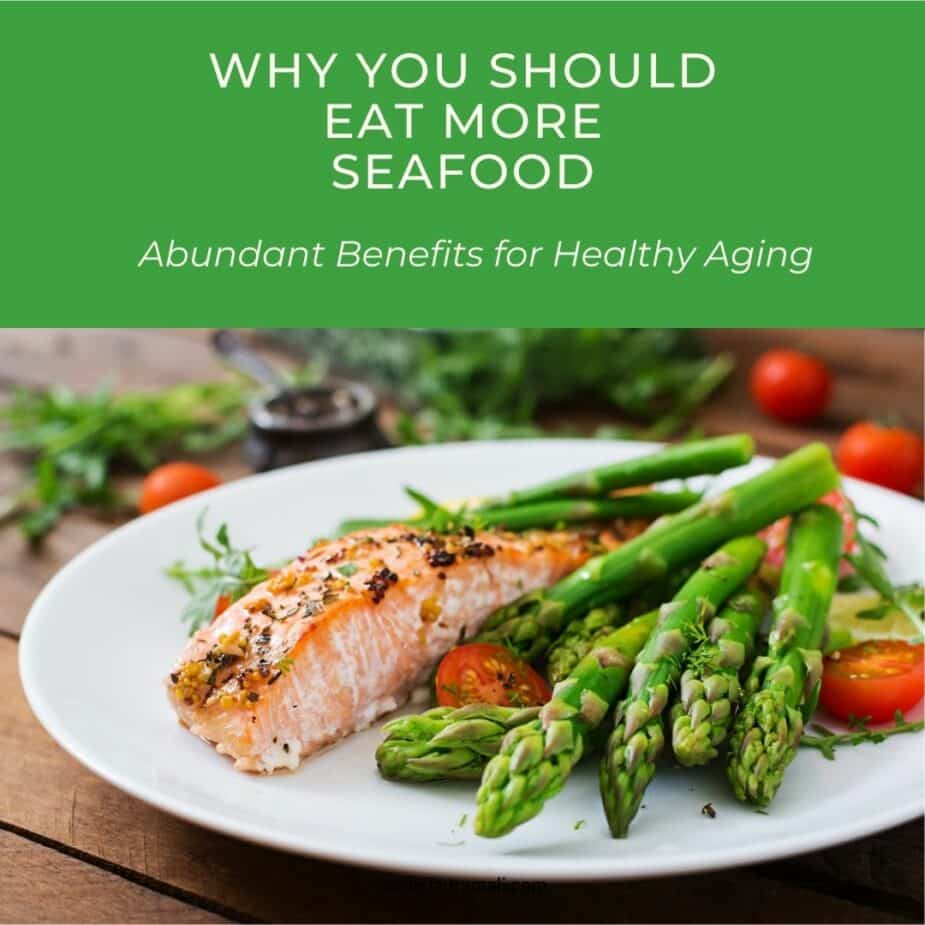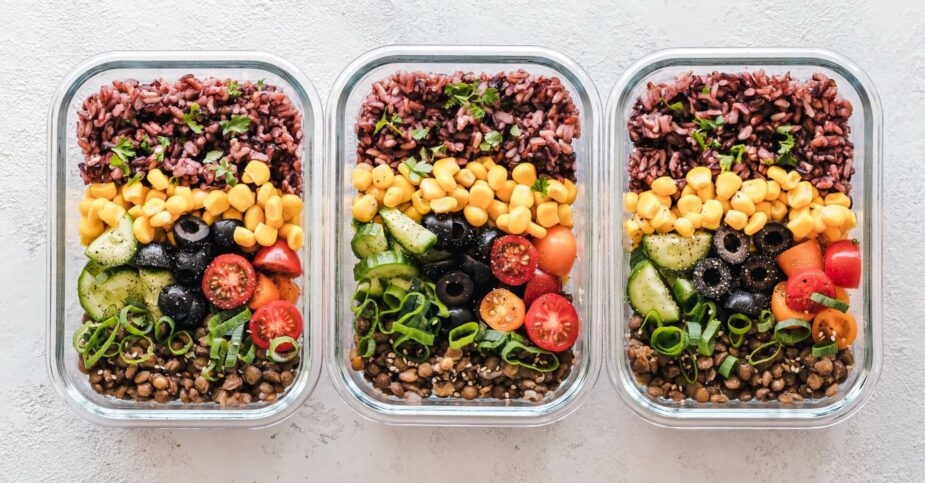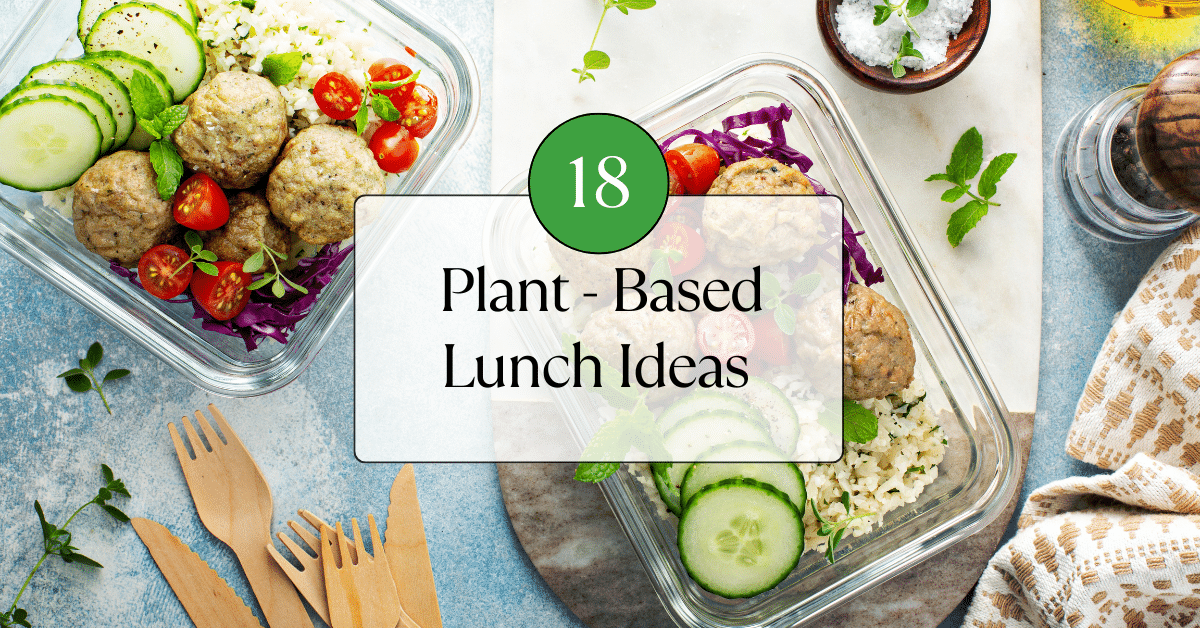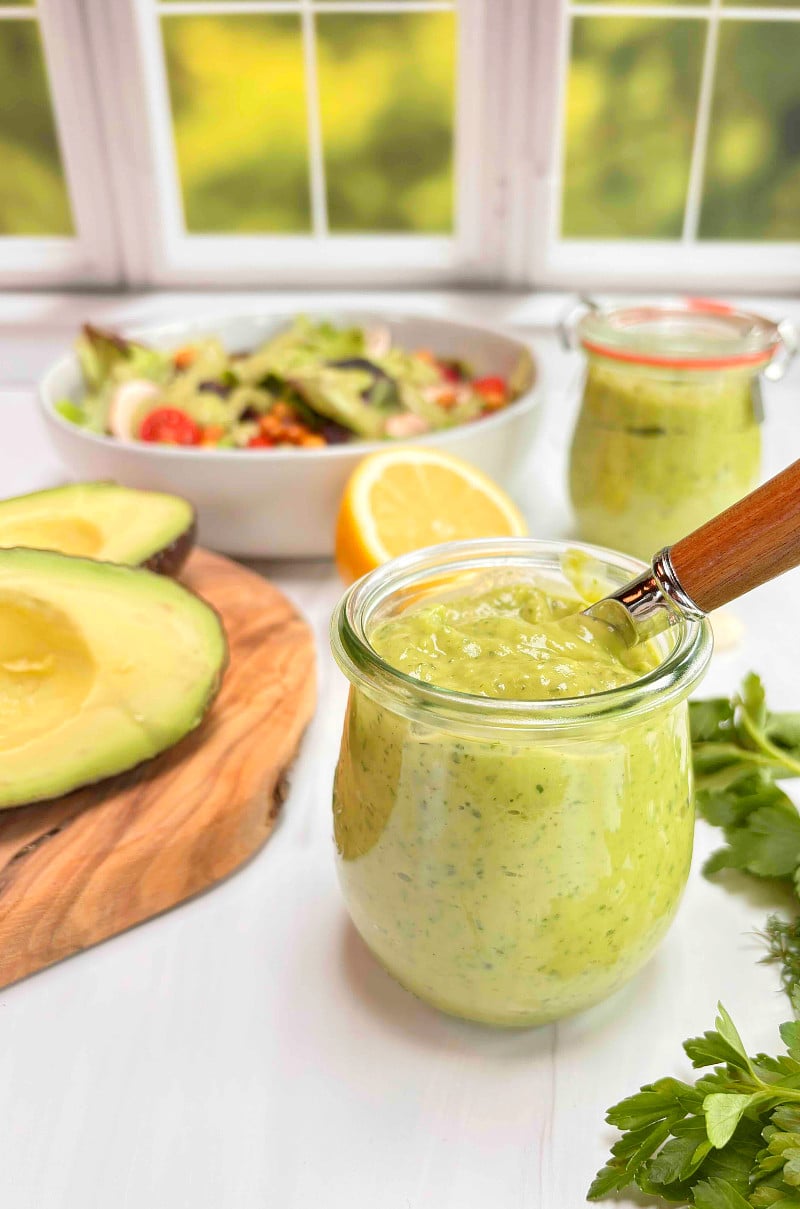As a registered dietitian, I’m often asked about which foods are helpful to maintain our health, at any age, but particularly as we get older. This is where one of my main recommendations is to incorporate more seafood into our diets.
Why? This lean protein stands out for its impressive array of unique health benefits. Unfortunately, seafood is something most of us don’t eat nearly enough of.
Beyond its delicious taste and ease of cooking, seafood has a variety of nutrients that contribute significantly to our overall well-being, especially as we age. In this article, we’ll delve into the health benefits that seafood offers.
Table of Contents
Why is Eating Seafood Good For Your Health?
The Dietary Guidelines for Americans recommends eating at least 2 servings, or 8 ounces, of seafood a week. However, most of us struggle to get even close to that. As a matter of fact, on average, most Americans only eat 2 – 3 ounces a week. Many of us don’t feel confident cooking seafood, which makes eating the recommended amount feel impossible. For my favorite (easy!) ways to cook seafood, check out this post: 5 of the Healthiest Ways to Cook Fish at Home
Why does this matter? Seafood is a rich source of nutrients that are good for your heart, brain, and immune system. It is a great source of lean protein that helps support our muscles and bones as we age. Most varieties of seafood are also low in calories and fat.
We’ll take a deep dive into some specific benefits but first, let’s take a look at some of the most important nutrients found in seafood.
Nutrients in Seafood
Unlike other proteins including beef, pork, and poultry, seafood offers a treasure trove of unique nutrients that are important for our well-being.
Packed with omega-3 fatty acids, seafood is a powerhouse for heart health, cognitive function, and joint flexibility. Additionally, it boasts an abundance of essential minerals like iodine, selenium, and zinc, crucial for supporting thyroid function and our immune system.
As we delve into the nutritional benefits of seafood, we’ll look at what makes it such a great choice for helping us live a healthier and more vibrant lifestyle.
Omega-3 fatty acids
Seafood is best known for containing omega-3 fatty acids. These healthy fats not only support our hearts but nourish our brains as well.
Docosahexaenoic acid (DHA) and eicosapentaenoic acid (EPA) omega-3s are only found in seafood and a few marine vegetables like seaweed. These are the fatty acids that are so important for our hearts and brains.
Fatty fish like salmon, trout, sardines, halibut, and tuna are higher in these fatty acids than leaner, white fish like cod or flounder. Even so, all fish and shellfish contain some of these healthy fats, which is why eating a variety of fish is important.
What about wild seafood vs. farm-raised seafood? Is there a difference in how much omega-3s are in these types?
Farm-raised seafood might take the lead, thanks to their carefully curated diet, rich in omega-3 fatty acids. On the flip side, wild-caught seafood follows nature’s ebbs and flows, with varying omega-3 levels dictated by their surroundings and the season.
Whether wild-caught or farm-raised, eating more seafood will add these healthy fats to your plate and bring a boatload of nutrition to boot.
How much seafood should we be eating and what does that translate to for omega-3 fatty acids? The Dietary Guidelines for Americans recommends healthy Americans eat 2 servings of seafood a week which would provide an average of 250mg of DHA and EPA daily.
Protein
Getting enough protein is vital throughout our lives, but especially as we age.
Protein is important for:
- Building muscles
- Repairing cells
- Healing wounds
- Maintaining our skin health
- Strengthening our bones
Similar to other animal-based proteins like beef, pork, and poultry, seafood is a high-quality protein. This means it has all the essential amino acids our bodies need to help build and repair cells, build muscle, and help with hormone production and nutrient transport and absorption.
One 4-ounce serving of seafood has between 20g and 33g of protein.
Vitamin D
The sunshine vitamin! Yes, one of the main ways to get vitamin D is through sunlight hitting your skin. Unfortunately, it’s hard to get enough of this important nutrient from sunlight alone, especially during those cold, dreary winter days for all of us in cold climates.
Food sources of vitamin D become more important to include in our diets, but alas, there aren’t many to choose from. That’s where seafood, especially fatty seafood like salmon and sardines, comes into play. They are some of the best natural sources of this nutrient.
One 4-ounce cooked salmon filet provides almost 100% of your daily requirements for vitamin D.
Zinc
Zinc is important for supporting our immune system which helps us fight infections and helps heal cuts and other wounds. Shellfish, in particular, oysters, are an excellent source of zinc with a 4-ounce serving of raw oysters (about 7 oysters) providing 170% of your daily needs.
Selenium
Selenium, in my opinion, is an underrated nutrient that protects us from some harmful heavy metals that are found in the environment and food including mercury, arsenic, and others.
Some types of seafood do contain some heavy metals like methylmercury. However, in most cases, even the FDA admits that you’d have to eat a lot of it before it would cause any issues. Even more important is that research is finding that selenium, also found in abundance in seafood, helps to block the absorption of these elements making them even less of an issue.
Selenium also helps our thyroid function correctly, supports our body making DNA, and supports our immune system.
Some research suggests that low blood levels of selenium may lead to a higher risk of heart disease, dementia, and some types of cancer. Research is ongoing but these are all good reasons to eat more seafood!
This antioxidant is found in many types of seafood but tuna, halibut, and sardines are especially rich in this nutrient with a 4-oz portion containing over 100% of your daily requirements.
B Vitamins
Vitamin B12 and B6, both of which help with energy production and metabolism and help support our brain health are found in seafood.
Just one, 4-ounce serving of salmon or tuna provides all the B12 you need in a day and almost half of the B6. Now, that’s pretty impressive!
Antioxidants
Fruits and veggies aren’t the only foods that contain antioxidants! Some seafood, especially those with a pink hue like shrimp and salmon contain the antioxidant astaxanthin.
Astaxanthin falls in the same category of antioxidants as those found in carrots and winter squash – the carotenoid family. It has been shown to have anti-inflammatory effects and may protect both our hearts and brain. It may also play a role in protecting our eyes and skin.
Heart Health Benefits of Seafood
Eating seafood is known to help improve our heart health, especially when it is swapped for higher saturated fat proteins. The American Heart Association recommends at least 2 servings of seafood a week, but even 1 serving is beneficial.
A diet rich in omega-3s has been linked to reduced heart disease rates, strokes, and reduced blood pressure.
And the science stands behind this. Studies have found that just two, 3-ounce servings of fatty seafood a week may reduce the risk of dying from heart disease by 36%.
Brain Health Benefits of Seafood
The cognitive benefits of eating seafood start before we are born and we continue to reap the benefits into our golden years. We think a lot of this is due to the omega-3 fatty acids found in seafood.
So let’s quickly review the different types of omega-3 fatty acids:
Docosahexaenoic Acid (DHA) – is found primarily in seafood. It makes up a significant part of our brain, the retina in our eyes, and other cell membranes.
Eicosapentaenoic Acid (EPA) – is also found primarily in seafood and helps reduce inflammation, may help lower triglyceride levels, and reduces the risk of heart disease.
Alpha-Linolenic Acid (ALA) – is found in plant foods like nuts and seeds. While it can be converted to DHA and EPA in our body only a small amount actually makes the change.
Because DHA makes up such a significant part of our brain, it makes sense that getting more of it in our diet helps support brain health throughout our lives.
Research suggests that regular consumption of seafood, especially during pregnancy and early childhood, may contribute to improved cognitive function including increases in IQ.
A higher intake of seafood has also been shown to reduce the risk of neurodegenerative conditions like dementia and slow the rate of cognitive decline as we age.
Immune Health Benefits of Seafood
Seafood holds a crucial place in fortifying our immune system. Packed with essential nutrients like zinc, selenium, and vitamin D, seafood serves as an ally in supporting our body’s defense mechanisms.
These nutrients help our immune cells function properly and are known for their anti-inflammatory properties, which can help fend off infections and support our overall health.
Those fish tacos aren’t just a mood boost, they’re keeping your immune defenses strong.
Even more Health Benefits of Eating Seafood
If I haven’t sold you yet on why you should eat more seafood this year, consider this: Consuming seafood has been linked to mood improvement, potentially reducing feelings of anxiety and depression, common concerns as we navigate life’s changes.
Additionally, the abundance of omega-3s in fish like salmon and sardines is fantastic for eye health, with increased seafood intakes leading to reduced rates of age-related macular degeneration (AMD).
Certainly maintaining good vision as you get older is high on your priority list. It definitely is on mine as I have a family history of AMD. Just one more reason I focus on eating seafood!
But that’s not all! The omega-3s and antioxidants found in seafood play a vital role in maintaining vibrant and glowing skin, helping to combat signs of aging.
Which types of Seafood are Best?
Almost all fish are good to include in your diet; it’s important to choose a variety of seafood, including both fatty fish and shellfish. Here are my 10 favorite varieties of seafood. Most of these are easy to find, relatively inexpensive (with one or two exceptions) and easy to prepare.
- Salmon – both farmed and wild-caught are healthy options.
- Tuna – canned and fresh are both good choices
- Flounder (also labeled as sole)
- Sardines
- Halibut
- Trout
- Cod
- Shrimp
- Mussels and Clams
- Scallops
You can read more about how to cook and prepare some of my favorite types of seafood here.
As a registered dietitian, I encourage everyone to explore the many varieties of seafood available and consider adding them to your weekly meals. For more information on seafood nutrition head over to the Seafood Nutrition Partnership.
Frequently Asked Questions (FAQs)
You may have more questions about eating seafood so I compiled a few questions that I get asked a lot. Let me know in the comments if you have others!
Farm-raised seafood is bred and harvested in a controlled environment. They are fed a standard diet that ensures they are a nutrient-rich and healthy choice. Fish may be farmed in rivers and oceans or on land in onshore tanks. Over half the fish eaten in America comes from farm-raised seafood.
Wild-caught seafood is one of the last frontiers. Fishermen go out and fish using pole and line or large nets in our oceans and rivers. The fish eat what they can find in the wild.
We need both wild-caught and farm-raised seafood to provide enough seafood to feed everyone and both can be good choices.
Canned, or tinned fish is an excellent choice to include. Because it is already cooked it is easy to prepare and can be added to almost any dish. Canned tuna, salmon, sardines, mackerel, and anchovies contain heart-healthy omega-3 fatty acids, vitamin D, selenium, and B vitamins.
Both water-packed and oil-packed varieties are good choices and there are many flavored options as well which can help reduce the amount of dressing or sauces that you need to add.
Overfishing and waste have been a concern in the seafood industry but a number of organizations are working to make sure the fish we eat is safe and leads to as minimal an environmental impact as possible.
The World Wildlife Fund, Marine Stewardship Council, and the Monterey Bay Seafood Aquarium all have efforts in place to help fisheries minimize their environmental impact and allow them to continue to provide safe and healthy seafood for the future and help consumers know which types of seafood are the most sustainable.
To ensure you are buying seafood that is certified as sustainable look for the Marine Stewardship Council (MSC) blue seal for wild-caught seafood. This ensures the seafood was caught by fishermen following sustainable fishing methods that assure there will be plenty of fish in the future.
Farm-raised seafood may also carry a green seal from the Aquaculture Stewardship Council (ASC) meaning that the farmed seafood was bred and harvested responsibly by methods that minimize the environmental impact.
For most people eating 2 servings of seafood a week will not lead to any concerns regarding methylmercury or other heavy metals. The FDA and EPA provides guidance for women who are pregnant and breastfeeding, those considering becoming pregnant, and young children regarding the types of seafood that are the best choices and how often to eat them.
Pulling It All Together
All types of seafood are exceptional choices, offering a variety of nutrients and health benefits that contribute to our overall well-being and vitality.
Because of its rich nutrient profile, particularly omega-3 fatty acids, vitamin D and B vitamins, and the role it plays in our heart health and brain function, and supporting our immune system, it’s on my list of foods we should be eating more of.
Would you like more nutrition information and easy tips to add delicious, healthy food to protect your heart and brain? Join my community for a monthly email full of new recipes, nutrition tidbits, and actionable tips you can take today. I’ll send you my FREE 7-day MIND Diet meal plan for you to get started on how to eat to improve your brain health.








